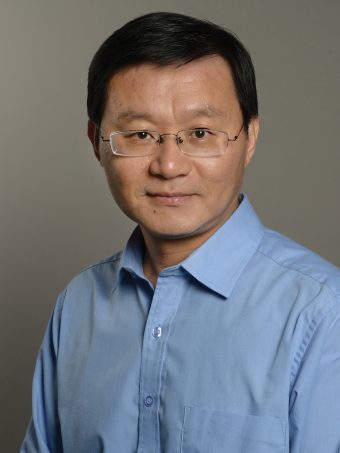SCIENCE
Mizzou prof Huang creates a novel approach to control energy waves in 4D

Mizzou professor Guoliang Huang is revolutionizing the way we think about elastic surface waves. His groundbreaking research has led to the development of a smart patterning technique for topological pumping of elastic surface waves, which could have far-reaching implications for a wide range of industries. By combining his expertise in mathematics, physics, and engineering, Huang is pushing the boundaries of what is possible and inspiring a new generation of scientists and engineers. 
The University of Missouri scientists engineered a synthetic metamaterial to direct mechanical waves along a specific path, which adds an innovative layer of control to 4D reality, otherwise known as the synthetic dimension.
ward and back. But, in recent years scientists like Guoliang Huang, the Huber and Helen Croft Chair in Engineering at MU, have explored a “fourth dimension” (4D), or synthetic dimension, as an extension of our current physical reality.
Now, Huang and a team of scientists in the Structured Materials and Dynamics Lab at the MU College of Engineering have successfully created a new synthetic metamaterial with 4D capabilities, including the ability to control energy waves on the surface of a solid material. These waves, called mechanical surface waves, are fundamental to how vibrations travel along the surface of solid materials.
While the team’s discovery, at this stage, is simply a building block for other scientists to take and adapt as needed, the material also has the potential to be scaled up for larger applications related to civil engineering, micro-electromechanical systems (MEMS) and national defense uses.
“Conventional materials are limited to only three dimensions with an X, Y, and Z axis,” Huang said. “But now we are building materials in the synthetic dimension, or 4D, which allows us to manipulate the energy wave path to go exactly where we want it to go as it travels from one corner of a material to another.”
This breakthrough discovery, called topological pumping, could one day lead to advancements in quantum mechanics and quantum computing by allowing for the development of higher-dimension quantum-mechanical effects.
“Most of the energy — 90% — from an earthquake happens along the surface of the Earth,” Huang said. “Therefore, by covering a pillow-like structure in this material and placing it on the Earth’s surface underneath a building, it could potentially help keep the structure from collapsing during an earthquake.”
The work builds on previous research by Huang and colleagues which demonstrates how a passive metamaterial could control the path of sound waves as they travel from one corner of a material to another.
Mizzou professor Guoliang Huang has created a revolutionary new method for topological pumping of elastic surface waves. His innovative approach has the potential to revolutionize the way we think about wave manipulation and could lead to a host of new applications in the fields of engineering, physics, and materials science. Huang's research is a testament to the power of creativity and dedication, and his work serves as an inspiration to scientists and engineers everywhere.
The study is supported by grants from the Air Force Office of Scientific Research and the Army Research Office.

